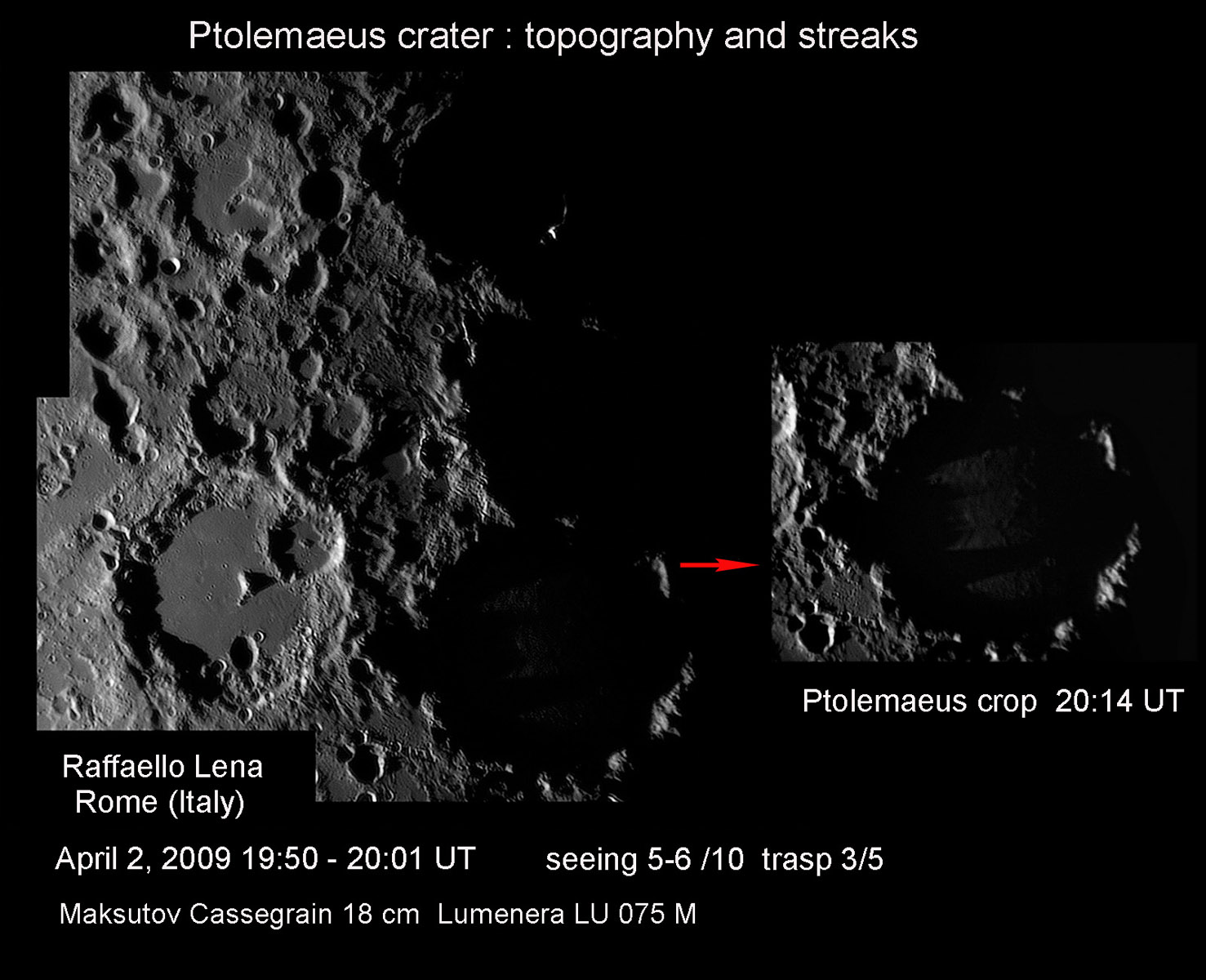April 5, 2009
One TLP Explained!

Image by Raffaello Lena, Rome, Italy. Note the faint "glow" on part of the floor in the left image that disappears 13 minutes later as the Sun illuminates more of the floor.
Detecting change on the Moon was the idée fixe of lunar observers for more than 200 years. In the 1800s such transient lunar phenomena (TLP) were breathlessly described in the English Mechanic, and currently are more dispassionately reported in each issue of the Lunar Observer. Some may be real, but there is little compelling evidence so far. In fact, Raf and Tony Cook have been able to explain a few classic TLP observations by repeating observations under illumination conditions that closely match the original reports. For example, In 1973 the prolific American observer Bartlett saw on the floor of Ptolemaeus a large oval bright area between center and S. wall though floor was in shadow. Looked like a feeble surface glow. The image above and the ones in Raf and Tony's 2004 report demonstrate that small scale elevation differences on the floor of Ptolemaeus, and low spots in the rim, predictably cause the condition that Bartlett reported. This detective work proves that Bartlett was a careful observer, and that calling this a TLP is pedantically correct (it is only visible at certain colongitudes for a few minutes), but the interpretation as a physical change on the Moon, rather than a temporary illumination effect, is invalid. A project is now underway to routinely image the Moon in an attempt to document scientifically the rate of occurrence and locations of TLP. Perhaps in a year or so we can say, By gosh, these things are real! or What a huge effort has been wasted over the last 200 years!
Chuck Wood
Technical Details
See image margin
Related Links
Rükl plate 44
Yesterday's LPOD: Swirlette
Tomorrow's LPOD: Big Ghost Ring
COMMENTS?
Register, Log in, and join in the comments.



